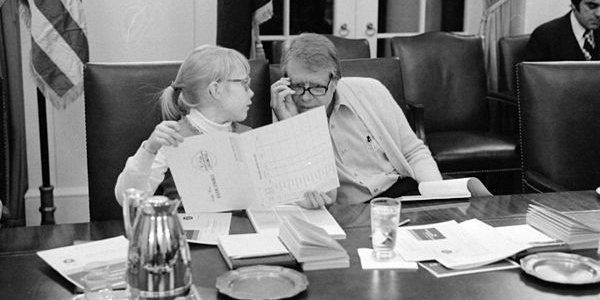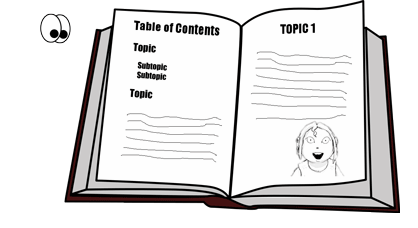Speed Reading Tips
What speed reading is, how to do it, and how it may just change your life
Apr 09, 2018Most people read about 300 words, or about one page, per minute. Speed readers can read about four times more quickly. Don't think it's possible? It probably isn't, the way you read now - focusing on one word at a time. If you've ever tried to teach yourself how to read more quickly, you may have tried skimming (looking at a page to pick out important words), or using your finger to focus on each word as you read. These techniques build on the way you learned to read when you were little - reading one word at a time, as if you're reading through a tunnel.
Speed reading, on the other hand, is about tapping into your mind's ability to see more than just one thing at once. For example, if you look at a tree, do you see one leaf at a time, or do you see the whole tree? (You do see the whole tree, right?) Looking at a whole group of leaves - or words - at once is natural vision, and that's the key to speed reading.
Did you know that kids with ADD and dyslexia may find speed reading to be easier than regular reading? Some experts say that it's because speed reading uses a different part of your brain that reads entire words and ideas at a time rather than decoding individual words.
Speed reading can help you when you are overloaded with reading assignments and could use a shortcut to help you finish homework and get to bed before midnight.
 President Jimmy Carter and his daughter, Amy, took a speed reading course at the White House in 1977Courtesy of National Archives
President Jimmy Carter and his daughter, Amy, took a speed reading course at the White House in 1977Courtesy of National Archives
Speed reading is great for:
- Reading a book quickly to get the main idea of a story
- Scanning a passage to get the main idea or find a specific fact - especially during a test, when writing a paper, or when answering homework questions
- Reviewing facts you've already learned, especially just before a test
- Reading the newspaper
- Reading something to see if it's a good fit to read more thoroughly later, like for a school paper, or a good beach read on summer break.
Speed reading isn't great for:
- Gaining in-depth knowledge or understanding new concepts
- Reading passages not written in your natural language, like Shakespeare or classic literature
- Reading poetry
- Reading personal letters
How to read faster in just one month
Exercise 1
You'll need:
- A book you haven't read before (a physical book, not an e-reader)
- A timer
- Two sticky notes
- A friend
What to do
- Set a timer for 10 seconds.
- Open the book to a random page and place a sticky note on the edge of the page. Don't look at the page yet.
- Place another sticky note five pages later.
- Have your friend start the timer and yell go.
- Glance at all five pages and stop when the timer goes off.
- Tell your friend any detail you remember from the pages you just looked at. You may not think you remember much, but remembering even one detail or word is a great start!
- Next, place the first sticky note on another page. Place the second note 15 pages later and set the timer for 30 seconds. When your friend says: "go," look at the new pages, but don't try to read them.
- Again, try to remember even one thing from the pages you looked at.
- Repeat this exercise a few more times, focusing on visualizing, or creating pictures in your mind, as you look at the pages.
- Trade places with your friend and see how they do. Tell each other the details you each remember.
 Practice speed reading with a friendCourtesy of GoodTherapy.org
Practice speed reading with a friendCourtesy of GoodTherapy.org
Exercise 2
All you need for this exercise is a physical book (not an e-reader).
- Open the book to a random page.
- Start at the top, center of the page and scan your eyes down the page, only looking at the middle.
- Close the book and see if you can remember what you read.
- Now look at another page, keeping your eyes on the center line, but try to expand your field of view a little wider. See how wide you can get as you scan down the middle of the next few pages. Scanning down the middle is called Expanded Reading.
- Now try reading another page, starting at the first word at the top left and moving your eyes like a snake moving in an s-pattern back and forth across the page from top to bottom. This is called Dynamic Reading.
Whether you prefer Expanded or Dynamic Reading, speed reading is a good way to read a lot of pages to get the main idea.
Reading for Understanding
Often, it's not enough just to read to get to the end of an assignment, chapter, or book. You need to understand and retain the information, too. But this type of reading shouldn't take forever, if you do it efficiently.
To make your reading for comprehension more efficient, try these tips:
- When you're reading a textbook, start at the back of the chapter. The end of the chapter will often have a summary that picks out key terms and concepts. Next, look at the questions at the end, if there are any. These are the key points you'll be reading for. Third, look at the headings and highlighted words. Fourth, read the introduction. By the time you read the "meat" of the chapter, most of the information will already feel familiar.
- When you're reading an essay then answering reading comprehension questions at the end, read the questions first. Once you know what you're reading for, it's easier to pick out the important facts as you read.
- Read with a pen and notecard nearby. Active reading - writing down things that seem important as you read - helps you retain the information better and improve your memory. This is because when you read, you are just engaging your eyes and your mind, but when you take notes, you are selecting key concepts and sending the message to your hand, which forms the words and helps commit it to memory. Getting more than one sense involved helps etch the information into your mind. If you're not big on writing, you can read out loud or, if you own the book, highlight the words.
 Scanning the headlines first is like seeing a preview before you watch the movie.Courtesy of PSU
Scanning the headlines first is like seeing a preview before you watch the movie.Courtesy of PSU
Have Your Say
Have you ever tried speed reading? Try the speed reading exercises in this article and let us know how they worked for you in the comments below.

































